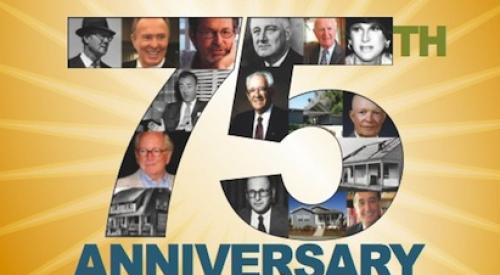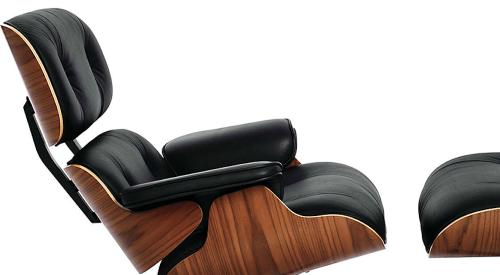|
Pinched pennies during the war led to spending in the aftermath. Economic growth started one year prior and continued through to 1960, making the United States the world's richest country. The two major sources for economic growth from 1946 to 1955: housing and automobiles.
The end of World War II not only increased Americans overall purchasing, but reproduction among Americans hit an all-time high. The baby boom spanned across 18 years, creating a demographic phenomenon.
 |
Returning servicemen and their rapidly growing families needed a place to live. These factors stimulated the housing boom with affordable mortgages and housing for all. The Housing Act of 1949 signed by President Harry S. Truman promised "a decent home and suitable living environment for every American family."
Many builders around the country struggled to come up with new ways to relieve the housing crisis for veterans. Building materials became scarce, and mass-produced housing wasn't the preferred method of building. On May 7, 1947, Levitt & Sons publicly announced its plan to build 2,000 mass-produced rental homes for veterans across 1,200 acres in Long Island, N.Y., later named Levittown.
Levitt & Sons turned out thirty houses a day by July 1948. It soon exceeded the 2,000 production mark and built an additional 4,000. In 1949, rental-housing production stopped, and Levitt & Sons began building ranch houses priced at $7,990. The last of the 17,447 houses Levitt & Sons built sold in 1951. It worked out all mistakes in its second community of 16,000 homes in Pennsylvania.
This was only the beginning of suburban neighborhoods popping up all over the country. Ten miles southeast of Los Angeles, a community called Lakewood emerged from a former sugar beet field. This post-war project began in 1950 by Lakewood Park Co. Turning out about 50 houses a day, the community was complete with 17,500 houses spanning more than 3,500 acres. These prefabricated houses cut costs and time drastically, which allowed more families to possess a home and become part of the American Dream.
Builders around the country caught on to the prefab process and started to change the way they thought about building. If builders didn't accept using complete prefab units, they did jump on board to use prefab housing parts, such as drywall.
Once builders met housing needs for war vets, the industry started to think about the postwar house. New models began to show off advanced designing techniques. Some of the exciting features included: one-story houses, first-floor laundry areas, bigger, fewer rooms, more storage space; bigger windows and attached garages.
Automobile production numbers quadrupled between 1946 and 1955. Production came to a halt during World War II. War materials became more important, so car factories shut their lines and used the materials to build weaponry, military vehicles and planes.
When auto production started up again, most of the models didn't vary much from the 1942 model, but that didn't seem to matter. Many Americans now depended on cars to travel to work from their new suburban homes. Cars started to become a necessity to many.
As servicemen came home from the war, they not only faced competition for housing but for their previous jobs before the war as well. War-producing workers now found themselves jobless, and those workers still maintaining their employment positions fought for overdue pay increases.
In 1946, 4.6 million workers across the automobile, steel and electrical industries went on strike — the largest strike in American history. Truman stepped in when strikes hit the railroads and soft-coal mines. Although the various strikes didn't last more than a few days at a time, they affected many industries including housing with delayed shipments of building materials.
Most of the products coming out on the market during this time are products we couldn't imagine living without now. Other products didn't last or became banned over time.
Although United States television broadcasting began in 1941, television sales didn't peak until 1947 with (170,000 models sold). Color television followed in 1954.
Prohibited in products today, asbestos was a widely used material in many building products during this time. Products included shingles, siding and insulation.
Other interesting products of this time: aluminum garage doors, aluminum siding, decorative plank wall panels, glass block, automatic dryer, Formica, veneer cupboard doors, front-opening dishwashers, car ports, plastic wall tiling, and built-in electric heaters for the bathroom wall.
4.6 million The number of workers in 1946 that went on strike.
70th Anniversary Article Series
|












